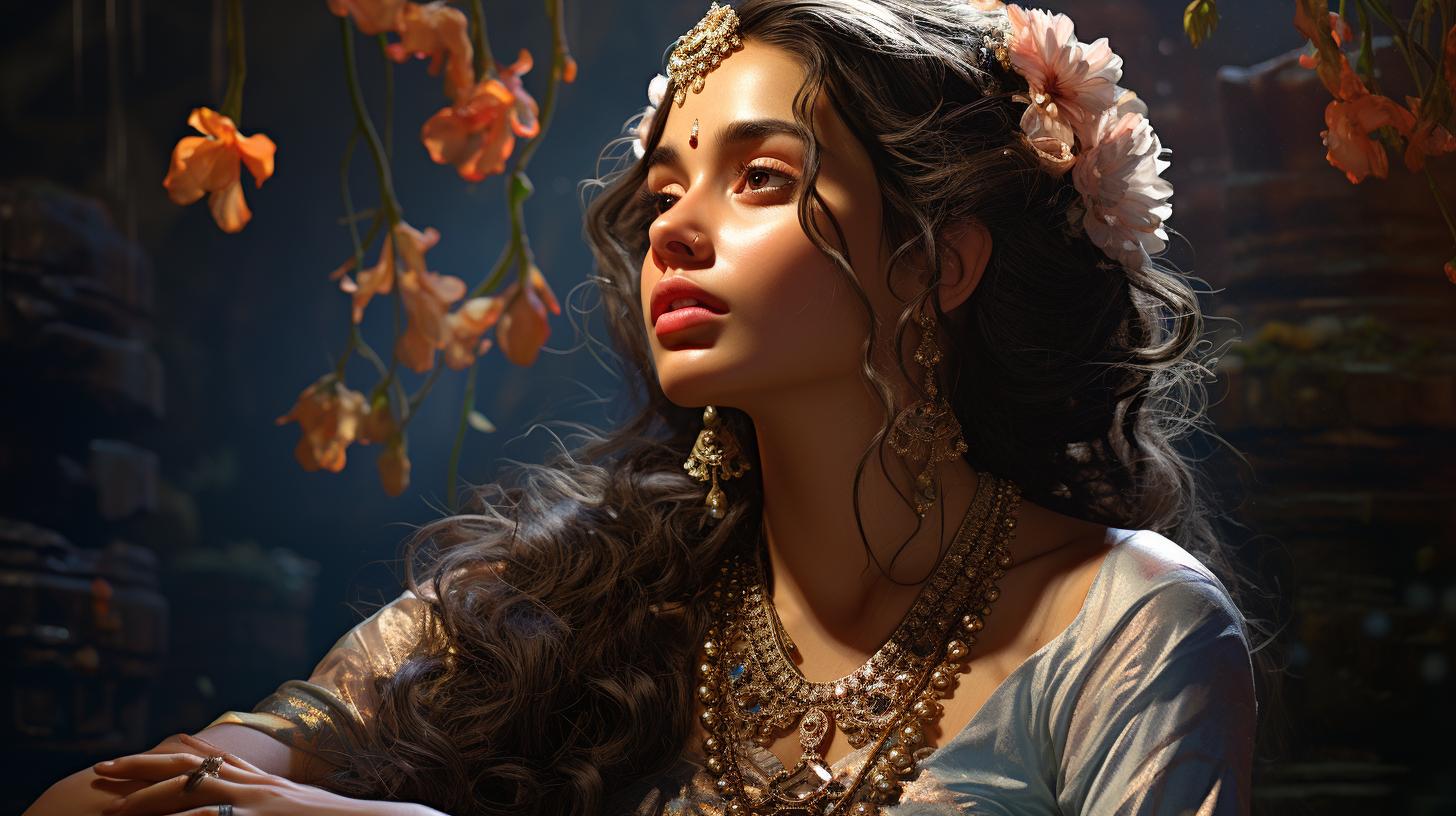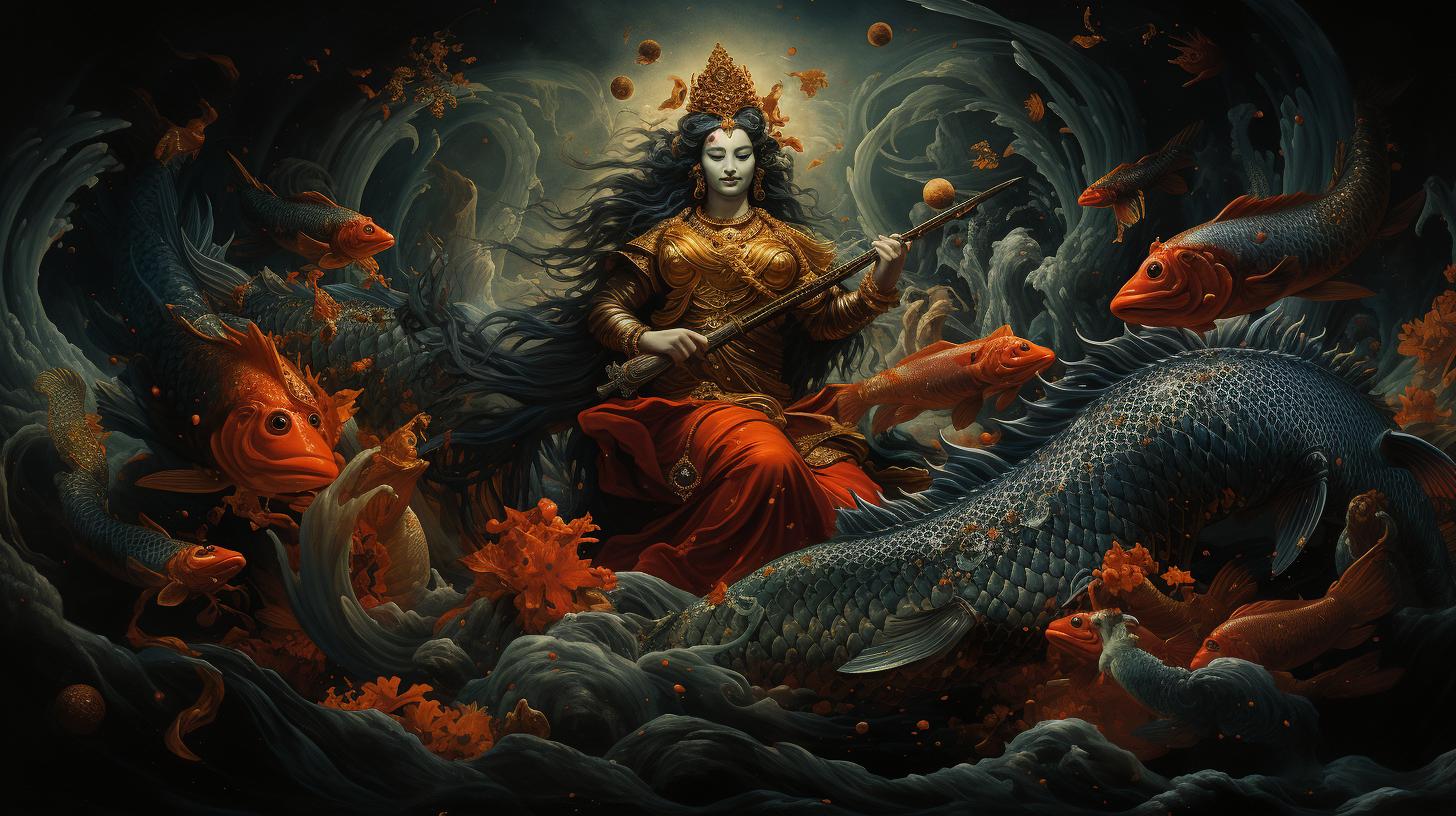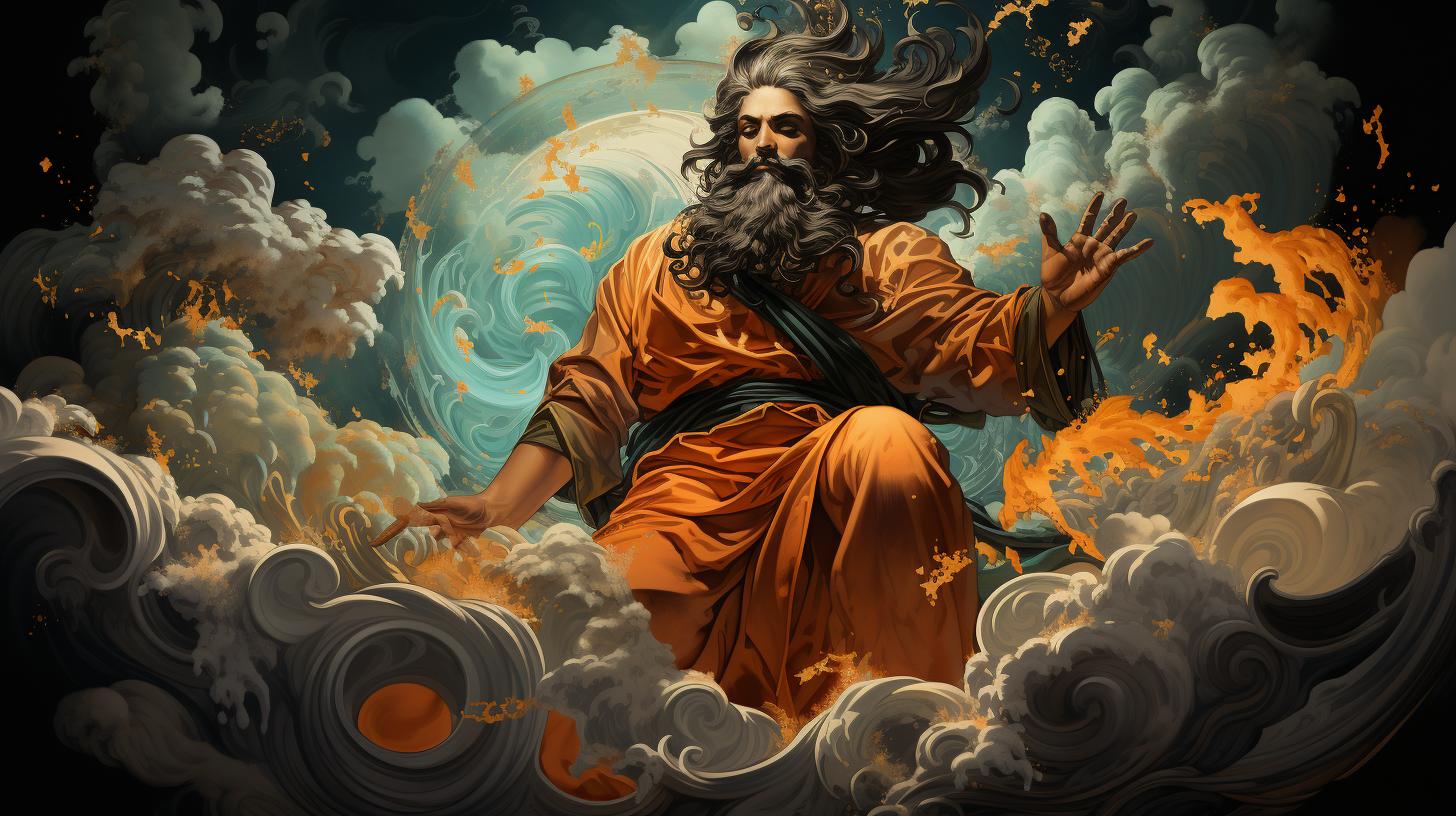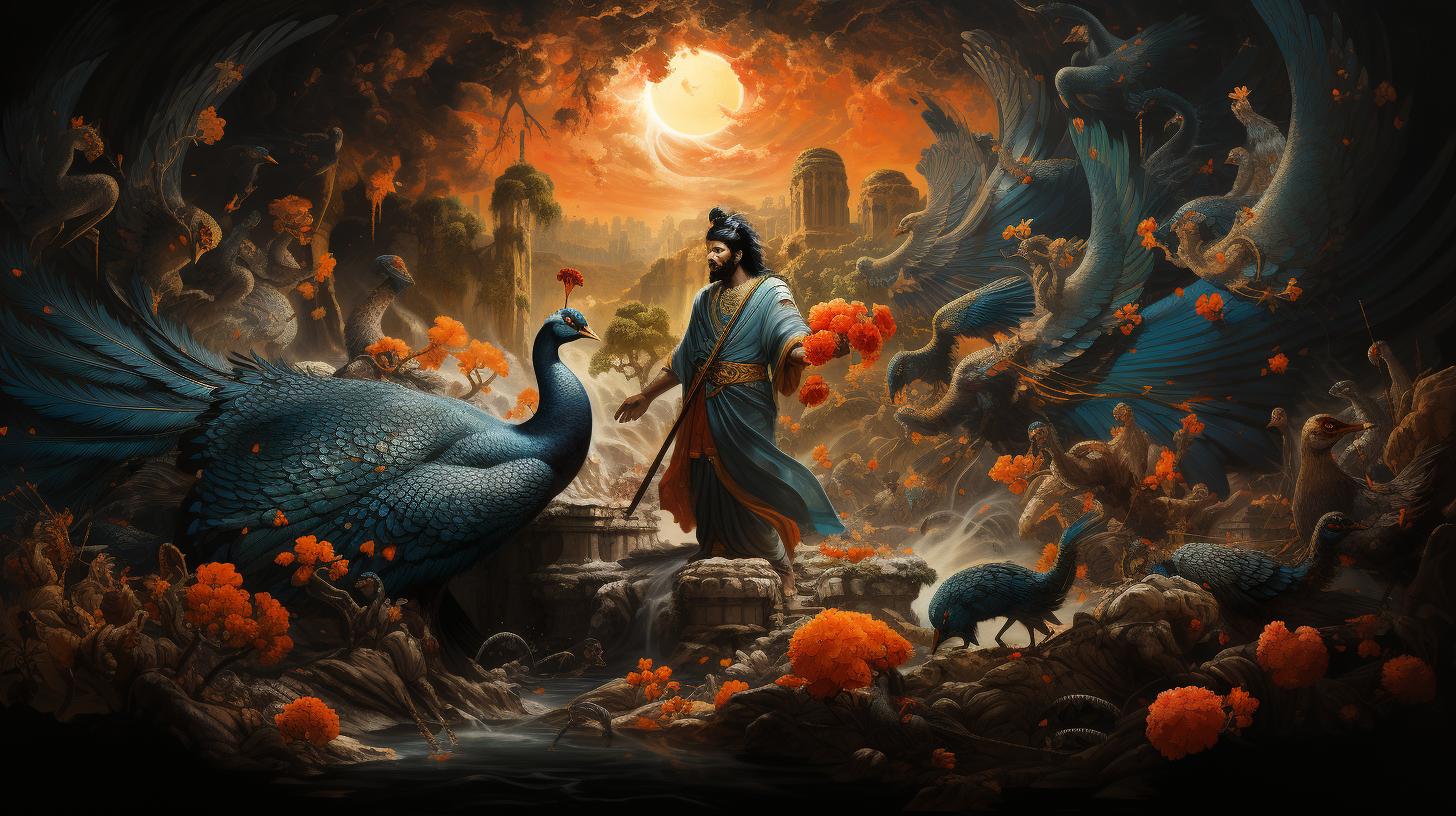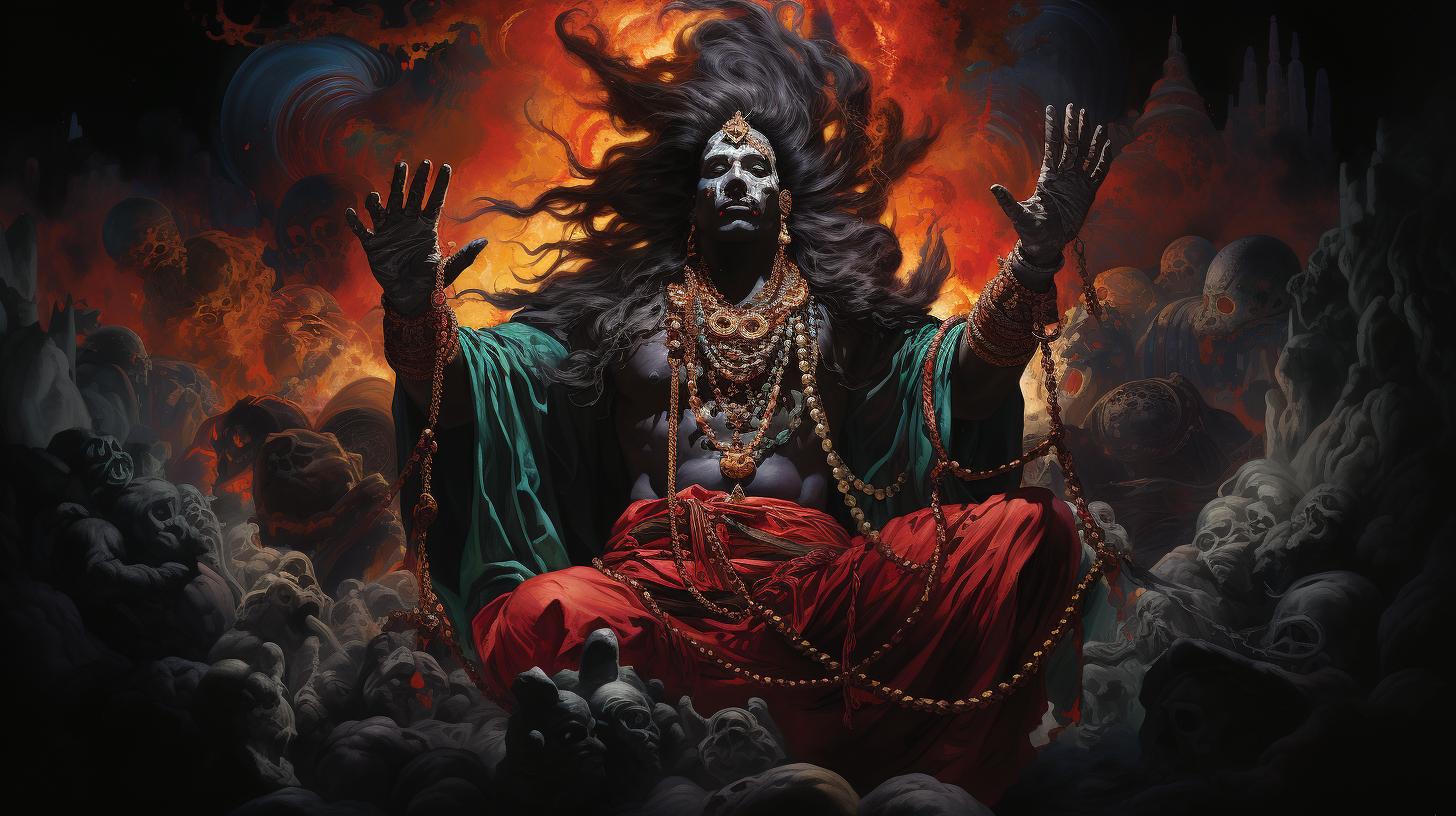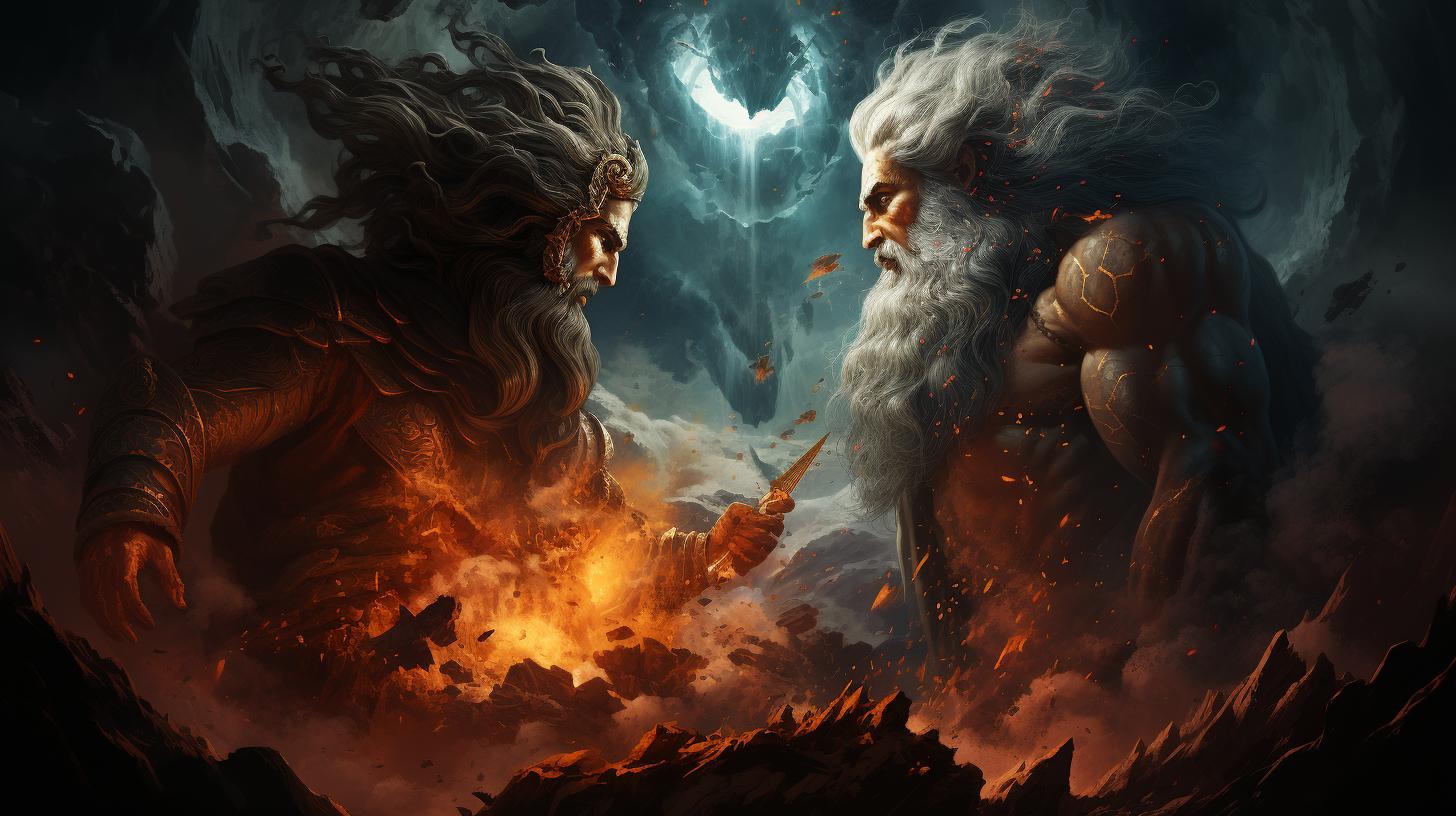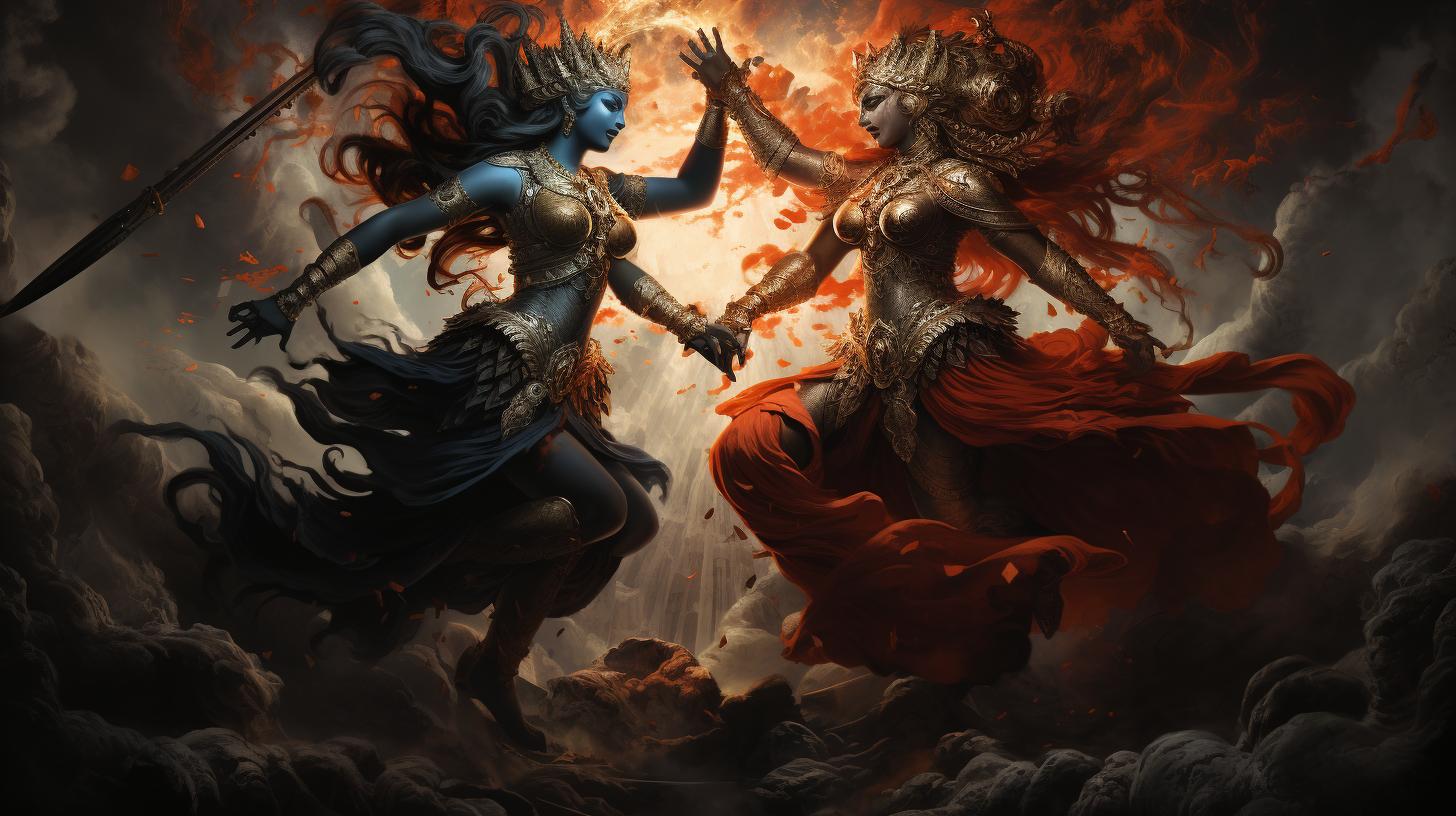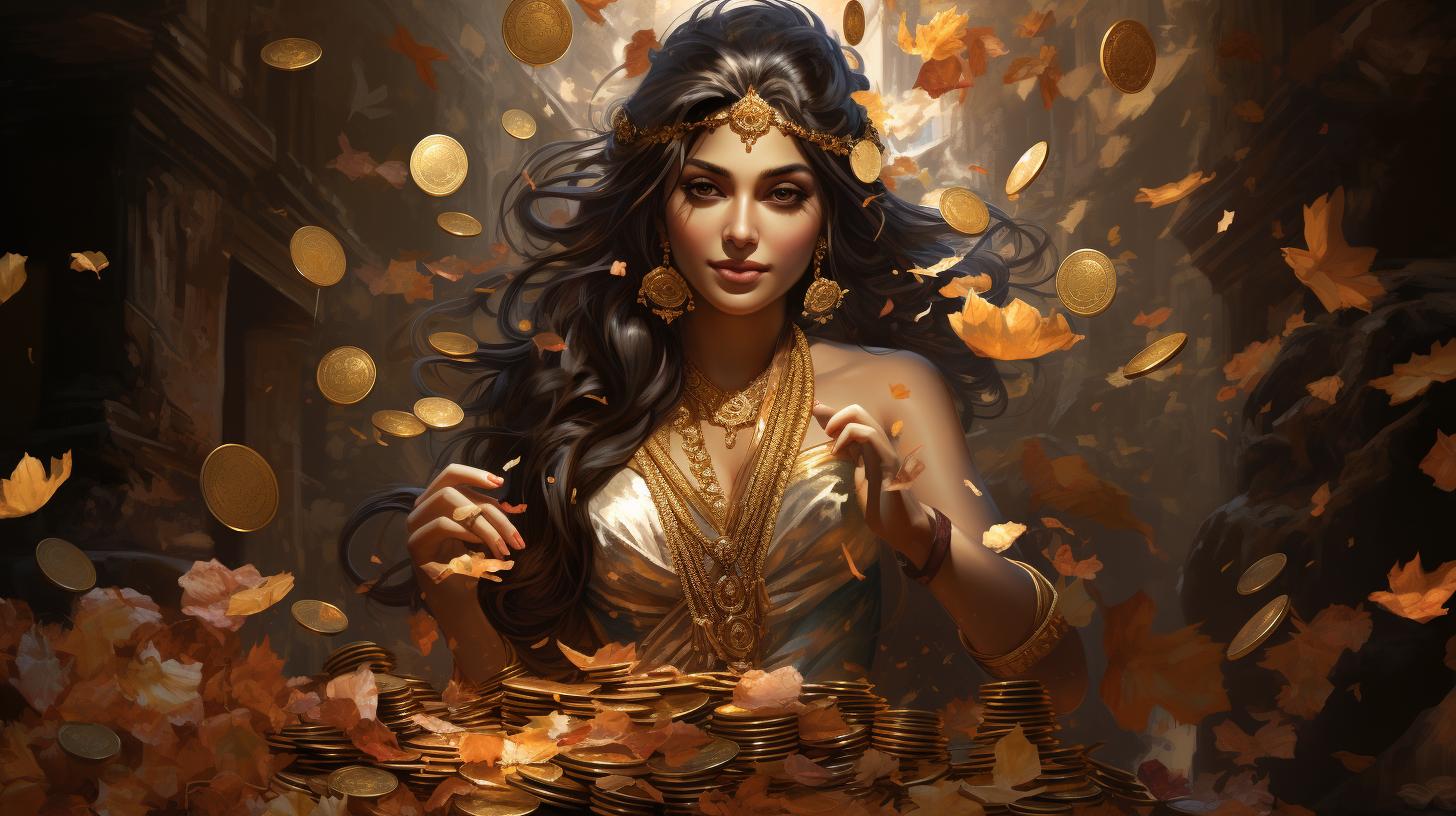Sita: The Inspiring Hindu Goddess of Dedication and Courage
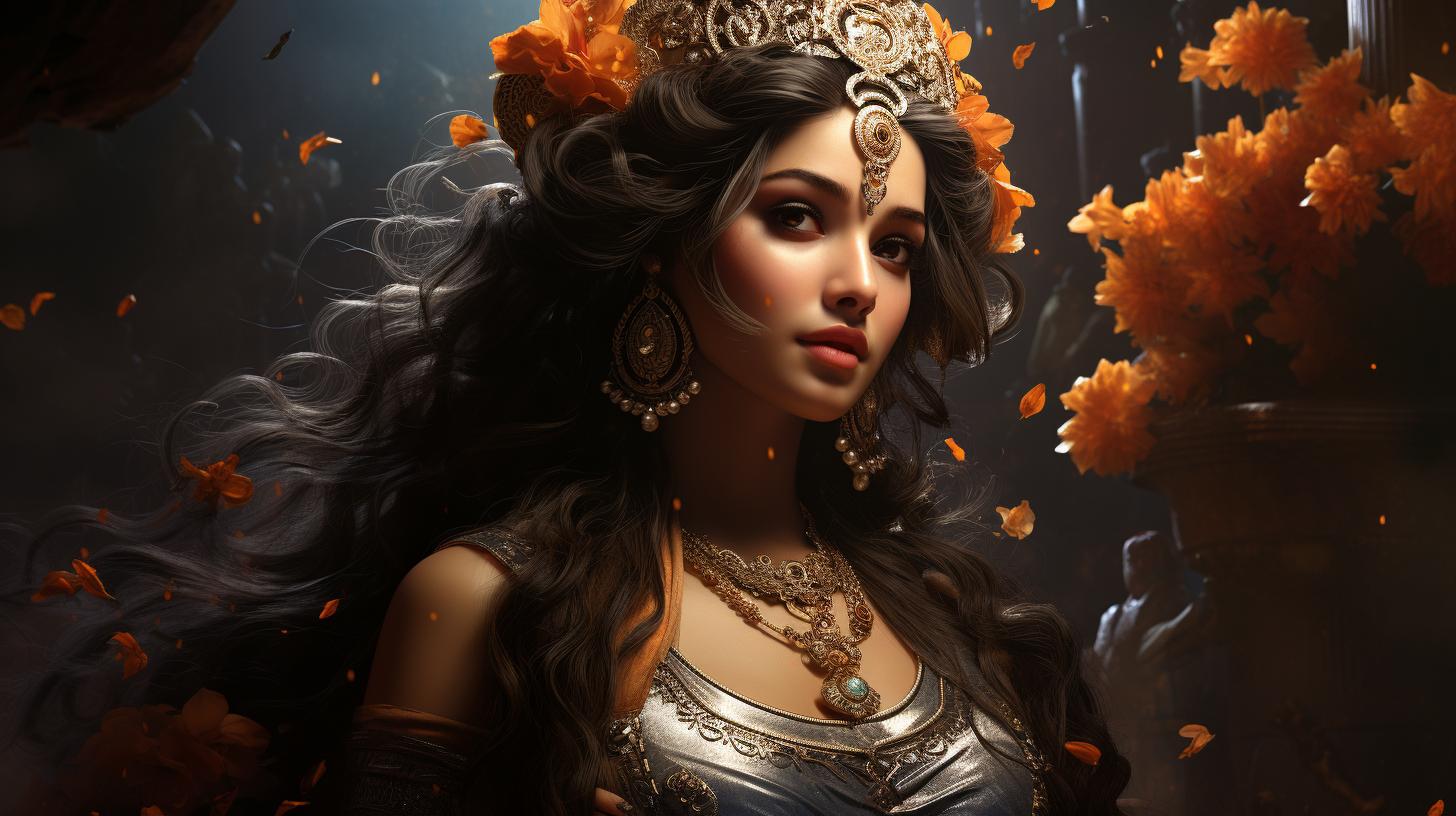
Sita, the Hindu goddess, is a revered figure known for her unwavering dedication, personal sacrifice, courage, and purity. She is the central female character in the Hindu epic Ramayana and is considered the daughter of the Earth.
Sita chooses Rama as her husband in a swayamvara and accompanies him during his exile in the Dandaka Forest. However, she is later kidnapped by Ravana and held captive in Lanka until Rama rescues her.
Throughout the epic, Sita’s purity and chastity are debated, and her story holds deep cultural significance and inspires devotion.
Sita: The Inspiring Hindu Goddess
Sita, the Hindu goddess, holds a significant and revered position in Hinduism. Her story and characteristics inspire millions, reflecting the devotion and admiration she commands. In this section, we will explore the background, role, mythical storyline, symbolism, and significance of Sita in Hindu culture.
The Background and Role of Sita in Hinduism
Sita’s presence in Hinduism goes beyond her role as a goddess. She represents devotion, loyalty, and sacrifice, embodying the ideal virtues and qualities valued in Hindu society. Through her story, Sita highlights the importance of love, duty, and righteousness in relationships, both in the divine and human realms.
The Mythical Storyline of Sita in the Ramayana
The Ramayana, one of the greatest Hindu epics, portrays Sita’s journey as the central female protagonist. Born from the earth and raised as the adopted daughter of King Janaka of Videha, Sita’s life takes an extraordinary turn when she chooses Rama as her husband during a swayamvara.
Together, they face the challenges of exile, the abduction by the demon king Ravana, and the eventual rescue and reunion with Rama.
The Symbolism and Significance of Sita in Hindu Culture
Sita’s character holds deep symbolism and significance in Hindu culture.
She represents purity, virtue, and resilience in the face of adversity. Sita’s unwavering dedication to her husband and the divine path she follows resonates with devotees, illustrating the ideals of righteousness, commitment, and strength that continue to inspire generations.
Sita’s Journey: From Daughter of Earth to Wife of Rama
Sita’s journey in the Hindu epic Ramayana is a tale filled with adventure, love, and challenges. Her story unfolds as she transitions from being the daughter of the Earth to becoming the beloved wife of Lord Rama. Let’s explore the different chapters of her remarkable journey.
Sita, also known as the daughter of the Earth, was born and raised in the kingdom of Videha, under the care of King Janaka. She was nurtured with love and imbued with noble virtues from a young age.
Sita’s upbringing played a significant role in shaping her character and preparing her for the extraordinary journey that lay ahead.
The Swayamvara and Marriage to Rama
One of the most significant events in Sita’s life was the swayamvara, a ceremony where she had the opportunity to choose her own husband. Guided by her heart, Sita chose Lord Rama as her partner, a decision that would bind their destinies together and set the stage for a profound love story.
Sita’s Exile in the Dandaka Forest
Following a series of tragic events, Rama, along with Sita and his brother Lakshmana, was forced into a fourteen-year exile in the dense Dandaka Forest. During this period, Sita showcased her unwavering devotion and resilience, standing firmly by Rama’s side despite the challenging circumstances they faced.
Sita’s Abduction by Ravana and Imprisonment in Lanka
In a cruel twist of fate, Sita was abducted by the demon king Ravana and taken to his kingdom of Lanka. Separated from her beloved Rama, Sita endured captivity and sorrow, yet she never lost hope and remained steadfast in her belief that Rama would rescue her.
The Rescue of Sita by Rama and their Reunion
Rama, aided by his loyal allies, waged a fierce battle against Ravana to save Sita and restore justice. With his unwavering determination and the help of the divine monkey warrior Hanuman, Rama successfully rescued Sita from Lanka.
Their long-awaited reunion was a moment of immense joy and triumph, marking the end of their arduous journey.
The journey of Sita from being the daughter of the Earth to becoming the cherished wife of Rama is an epic saga of love, devotion, and selflessness.
It is a tale that continues to inspire people with its timeless message of unwavering faith and the triumph of good over evil.
Controversies and Interpretations Surrounding Sita
Let’s explore some of these controversial aspects and the different perspectives surrounding them.
The Agni Pariksha: Debating Sita’s Purity and Chastity
One of the most debated incidents in Sita’s story is the Agni Pariksha, the test of fire, which she underwent to prove her purity and chastity. While some view it as a symbolic affirmation of her loyalty and virtue, others argue that subjecting Sita to such a trial raises questions about autonomy and gender equality.
Sita’s Banishment to the Forest: Evaluating Rama’s Decision
Rama’s decision to send Sita into exile in the forest, despite her purity, remains a topic of discussion and analysis. The ethical implications of this act are examined through different lenses, with contrasting opinions on Rama’s role as a righteous leader and the implications for Sita’s portrayal as a victim or survivor.
Sita as the Embodiment of Lakshmi: The Goddess of Wealth and Virtue
Another perspective on Sita revolves around her deep association with Lakshmi, the goddess of wealth and virtue. This symbolism highlights Sita’s revered status as an embodiment of grace, abundance, and prosperity.
Such interpretations emphasize her spiritual and divine nature beyond her role as Rama’s wife.
The Feminist Perspective: Reclaiming Sita’s Agency and Strength
Examining Sita’s story through a feminist lens allows for the exploration of her agency and strength amidst challenging circumstances. Critics argue that focusing solely on Sita’s victimhood undermines her resilience and resourcefulness, opting instead to reclaim her narrative as an inspiration for empowerment.
These controversies and interpretations surrounding Sita shed light on the complexity of her character within Hindu mythology. As discussions continue, they contribute to a broader understanding of gender dynamics, societal expectations, and the ongoing relevance of Sita’s story in contemporary contexts.
Sita’s Cultural Influence and Devotion
Sita, the Hindu goddess, holds immense cultural influence and devotion among her followers. Her story resonates deeply, inspiring reverence and admiration across the Hindu community worldwide. Let’s explore the various aspects of Sita’s cultural impact and the devotion she commands.
Sita as a National Heroine in Nepal
In Nepal, Sita is revered as a national heroine, representing the very essence of purity, sacrifice, and strength. She is celebrated for her unwavering devotion to Rama and her resilience during difficult times.
Nepalese people remember her steadfastness and revere her as a symbol of national pride.
Festivals and Worship Dedicated to Sita
Devotees express their reverence for Sita through vibrant and joyous festivals dedicated to her. One such festival is the Sita Jayanti, which commemorates her birth anniversary. During this celebration, devotees offer prayers, recite sacred hymns, and engage in devotional activities to honor Sita’s divine presence.
Sita’s Impact on Popular Culture and Literature
Sita’s story has left an indelible mark on popular culture and literature across generations. Her tale of love, devotion, and unwavering faith has inspired countless poets, writers, and artists. From classical plays and novels to contemporary adaptations, Sita’s character continues to captivate and inspire creative minds worldwide.
Sita’s Relevance in Modern Hindu Diaspora
Even in modern times, Sita remains a relevant figure in the hearts and minds of the Hindu diaspora. As Hindus spread across the globe, they carry with them the devotion and admiration for Sita.
Her story serves as a beacon of hope, guiding individuals through challenging life situations and inspiring them to stay true to their values and principles.
Overall, Sita’s cultural influence and the devotion she elicits are testament to the timeless power of her character and story.
Her impact extends beyond religious boundaries, touching the lives of people from various backgrounds and inspiring them with her unwavering dedication and courage.
Notes on Sita in Historical and Scholarly Context
Within the historical and scholarly context, the character of Sita holds a significant place and has been explored in various Hindu scriptures, texts, and mythologies.
Here, we delve into several aspects that shed light on the depth and relevance of Sita’s character and her impact on gender and power dynamics.
Sita in Valmiki’s Ramayana and Other Versions
Valmiki’s Ramayana, one of the earliest and most influential versions of the epic, depicts Sita as a central figure in the narrative.
Her journey, trials, and triumphs are intricately woven into the narrative, showcasing her strength and unwavering devotion to her husband, Rama. Other versions of the Ramayana also add unique dimensions to Sita’s character, emphasizing different qualities and aspects of her persona.
The Devotion to Sita in Hindu Scriptures and Texts
Not only is Sita revered in the Ramayana, but her character also garners immense devotion and admiration in various Hindu scriptures and texts. She is seen as an embodiment of virtue, femininity, and sacrifice, serving as a role model for women and inspiring reverence from followers.
Devotional hymns and litanies dedicated to Sita highlight her divine qualities and the impact she has on devout Hindus.
Comparative Analysis: Sita and Other Female Figures in Hindu Mythology
Comparative analysis of Sita with other notable female figures in Hindu mythology illuminates the diverse representation and roles of women in ancient Hindu texts. While Sita symbolizes steadfastness and loyalty, goddesses like Durga and Kali personify power and fierce determination.
Exploring these differences provides a nuanced understanding of the multifaceted nature of femininity reflected in Hindu mythology.
Sita’s Role in the Reconstruction of Gender and Power Dynamics
Sita’s narrative also plays a crucial role in addressing gender dynamics and power structures within Hindu culture. Scholars analyze how her character challenges traditional gender roles and expectations, especially in instances like the Agni Pariksha, where debates surrounding her purity and chastity arise.
Sita’s story thus becomes a catalyst for examining the complex intersection of gender, power, and societal norms.
In conclusion, understanding Sita within historical and scholarly contexts allows us to appreciate the layers of her character and the impact she has had on Hindu mythology.
Exploring her portrayal in different versions of the Ramayana, her presence in Hindu scriptures, her comparison with other female figures, and her role in challenging gender and power dynamics deepens our understanding of the significance of Sita in Hindu culture.
Sita: A Timeless Symbol of Dedication and Courage
Sita, the revered Hindu goddess, embodies profound lessons that transcend time and continue to inspire individuals on their personal journey towards growth and empowerment. Her story is a testament to unwavering dedication and unwavering courage in the face of adversity.
Through Sita’s experiences, we gain invaluable insights into our own lives and find strength to overcome challenges.
Lessons from Sita’s Journey for Personal Growth and Empowerment
Sita’s journey offers numerous lessons for personal growth and empowerment. Her unwavering dedication to her chosen path teaches us the importance of staying true to our convictions, even when faced with difficult choices.
Sita’s resilience in the face of hardships inspires us to persevere and find inner strength during challenging times. Her unwavering faith and unwavering belief in the power of love and righteousness remind us of the importance of holding onto our values and staying true to ourselves.
Sita’s Relevance in Contemporary Society
Although Sita’s story comes from ancient mythology, her relevance in contemporary society remains strong. Her character exemplifies the empowerment of women and their ability to navigate through adversity with grace and determination.
Sita’s unwavering dedication to her partner and society highlights the importance of trust, respect, and commitment in relationships. Her story also serves as a reminder of the social and cultural progress we have made and the challenges that still lie ahead in achieving gender equality and empowerment.
Inspiring Women through Sita’s Story
Sita’s story has become a timeless source of inspiration for women across generations. Her resilience, courage, and unwavering dedication remind women of their inherent strength and ability to overcome challenges. Sita’s unwavering commitment to her values and her refusal to compromise her principles serve as a powerful example for women to stand up for what they believe in and strive for personal and societal transformation.
Sita’s story empowers women to embrace their true selves, pursue their dreams, and break societal barriers.
The Legacy of Sita: Remembering her Strength and Resilience
Sita’s legacy lies in her enduring strength and resilience. Her story continues to resonate with individuals seeking inspiration and guidance. Sita’s unwavering dedication and courage serve as a poignant reminder of the indomitable spirit within each of us.
Her legacy encourages us to strive for greatness, to remain steadfast in our values, and to overcome any obstacles that come our way. Sita’s story will forever be cherished as a testament to the power of love, sacrifice, and unwavering courage.
..

